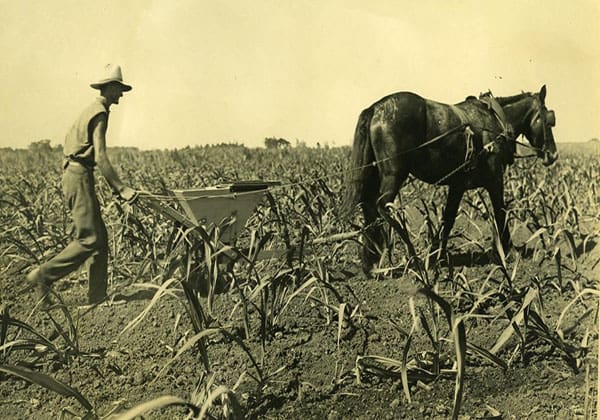When Scott Morrison claimed last year that slavery didn’t exist in Australia, the subsequent backlash predictably highlighted various forms of Australian slavery. From the 1860s to 1903, sixty-two thousand South Sea Islanders were kidnapped or coerced to work on the sugar cane plantations of northern Queensland in conditions akin to slavery. Highlighting he history of the enslavement of First Nations and Pacific Islander people is important in showing that Australian slavery wasn’t entirely dissimilar to that of the United States. Yet, the public focus on Australia’s history of slavery was limited in that it did not address other pernicious aspects of racial inequality in Australia, in particular within the sugar cane industry. Following the mass deportation of Pacific Islander cane workers from 1901, the Australian sugar cane industry became representative of a new form of xenophobic race patriotism, a jingoistic pride in Australia’s white cane industry.
Even before the colonisation of Australia, sugar was a symbol of colonial power. From the 16th century, Dutch colonisers transported sugar to be planted in colonies in the Americas. The British and French followed, using West African slave labour to cultivate sugar in their Caribbean colonies. The physical difficulty of harvesting cane, and growing demand in Europe, created a large-scale slave trade that left legacies of oppression on both sides of the Atlantic. In Europe, greater supplies of this new luxury made sugar increasingly accessible beyond the upper classes and it quickly became a by-product of imperial dominance that was unifying in its ubiquity.
When sugarcane, with all its colonial connotations, was brought to Australia in 1788, it quickly became a source of anxiety for the white colonisers. Sugarcane was unable to be grown in the early colonies of NSW, leaving a seventy-three year long wait for the crop to be grown locally for the first time in North Queensland. This production quickly became a priority; xenophobia and fears of an ‘Asian invasion’ of the North and the perceived need to put the land ‘to good use’ drove the proliferation of the industry. It was this need for advancement that led to the widespread importation of Pacific Island labour.
The intense push for a White Australia surrounding Federation provided the impetus for the overhaul of the cane industry in Australia. While indentured labour was supported by the plantation-owning upper class, working class agitation initially drove the ‘whitening’ of the cane industry. Discontent with the islander workers was framed by the view that the ‘primitive’ Islanders were a eugenic challenge to Australia. This led to the passing of the Pacific Islanders Labour Act 1901, one of the ‘two pillars’ of the White Australia Policy, which saw the deportation of Pacific Islander cane workers.
Of greater significance is how a white labour movement, built on racist ideology, emerged following the deportations. Given the difficulty of the labour and the strong ideological connection of cane harvesting with slavery, white workers were reluctant to replace the deported labourers. As such, a government-sanctioned labour movement that appealed to racial solidarity developed. Workers called for a ‘wage of whiteness’ — evoking language of ‘fairness’ exclusively for white workers — in industrial disputes that culminated in the 1911 ‘Sugar Strike’. In addition to racialised industrial action, influential figures within the Australian Institute of Tropical Medicine mythologised an anatomically superior ‘working white race’ of northern Australia to artificially validate the skill of the new white workers. These tactics were effective in achieving higher wages, dangerously instilling confidence in white solidarity.
Challenged by having to pay higher wages, plantation owners chose to adopt the racialised appeals of the white workers. The sugar industry launched advertising campaigns in newspapers across Australia highlighting the value of Australian sugar cane, marked by the claim that Australian sugar was the only sugar to be made by white workers. As such, purchasing sugar became seen as a patriotic duty, not only to pay the ‘wage of whiteness’ but to provide for Australia’s national defence. Imagery of Australia’s north without cane farming was used in advertisements, with the implication that without the cane industry Australia would be vulnerable to invasion. In appealing to multiple forms of racial pride, these campaigns became successful with the aid of the government which asserted the need to be “prepared to pay” for a White Australia. Australia’s consumption of sugar throughout the 20th century was significantly higher than in other comparable countries and was at times the highest per-capita in the world. Consumers were happy to pay for a product that was marketed to be both chemically and racially superior to the ‘black’ overseas sugar, which was seen as less refined than that of Queensland. It was through sugar that Australia stripped itself of a racially diverse social identity, seeking ever-‘purer’ whiteness in its sweetener as much as in its demography. Australian white sugar was to molasses as the white Australian was to the racial ‘other’.





